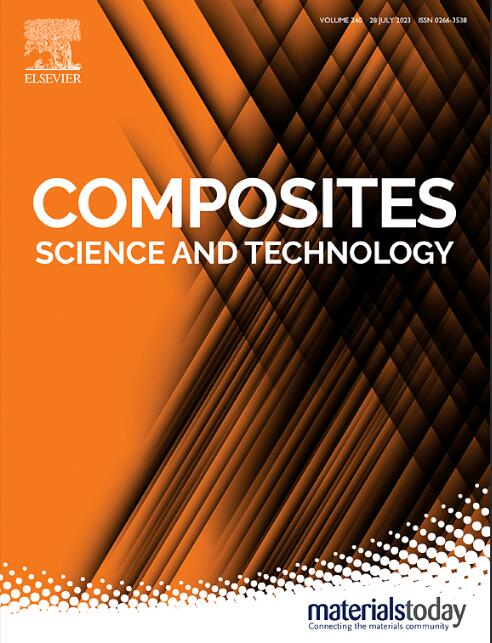A novel experimental approach for high-velocity ice impact resistance and tolerance investigation of composite laminates
IF 8.3
1区 材料科学
Q1 MATERIALS SCIENCE, COMPOSITES
引用次数: 0
Abstract
The application of composites in aerospace structures necessitates consideration of various inevitable impact threats. However, high-velocity ice impact behavior significantly differs from that of metal projectiles, presenting challenges in investigating the ice impact response and residual performance of composites. To address this, an innovative comprehensive testing system for simulated hailstone impact and compression after high-velocity ice impact (CAHII) of composites is designed, combined with multi-damage information acquisition. Based on this system, the CAHII behaviors of plain weave carbon/epoxy composite laminates are investigated for the first time within the single impact energy range of 125 – 480 J. The composite deformation features associated with the ice projectile fracture process are captured. The stage-specific damage characteristics are identified through visual inspection, ultrasonic C-scan and microscopic observation. By correlating strain and displacement distribution fields with load-displacement curves in CAHII tests, the impact-induced damage evolution and loading process are analyzed. Notably, residual compressive strength (RCS) of plain weave composites presents exponential degradation with increasing impact energy. An RCS predictive model is proposed and effectively validated. Moreover, a quantitative evaluation method for high-velocity ice impact resistance and tolerance based on the CAHII testing system and RCS degradation ratio model is proposed with greater applicability. This provides valuable guidance for standardized experiments and performance assessment of composites.

一种新的复合材料层合板高速冰冲击抗力和耐受性试验方法
复合材料在航空航天结构中的应用需要考虑各种不可避免的冲击威胁。然而,高速冰冲击行为与金属弹丸明显不同,这给研究复合材料的冰冲击响应和残余性能带来了挑战。为解决这一问题,结合多损伤信息采集,设计了一套创新的复合材料高速冰冲击压缩模拟冰雹综合测试系统(CAHII)。在此基础上,首次研究了碳纤维/环氧复合材料层合板在单次冲击能量125 ~ 480 j范围内的CAHII行为,捕捉到了冰弹断裂过程中复合材料的变形特征。通过目视检查、超声c扫描和显微观察确定了阶段特异性损伤特征。通过将CAHII试验中的应变和位移分布场与荷载-位移曲线相关联,分析了冲击损伤演化和加载过程。值得注意的是,随着冲击能量的增加,平纹编织复合材料的残余抗压强度呈指数级下降。提出了一种RCS预测模型,并进行了有效验证。提出了一种基于CAHII试验系统和RCS退化比模型的高速冰冲击抗力和容限定量评价方法,具有较强的适用性。这为复合材料的标准化实验和性能评价提供了有价值的指导。
本文章由计算机程序翻译,如有差异,请以英文原文为准。
求助全文
约1分钟内获得全文
求助全文
来源期刊

Composites Science and Technology
工程技术-材料科学:复合
CiteScore
16.20
自引率
9.90%
发文量
611
审稿时长
33 days
期刊介绍:
Composites Science and Technology publishes refereed original articles on the fundamental and applied science of engineering composites. The focus of this journal is on polymeric matrix composites with reinforcements/fillers ranging from nano- to macro-scale. CSTE encourages manuscripts reporting unique, innovative contributions to the physics, chemistry, materials science and applied mechanics aspects of advanced composites.
Besides traditional fiber reinforced composites, novel composites with significant potential for engineering applications are encouraged.
 求助内容:
求助内容: 应助结果提醒方式:
应助结果提醒方式:


